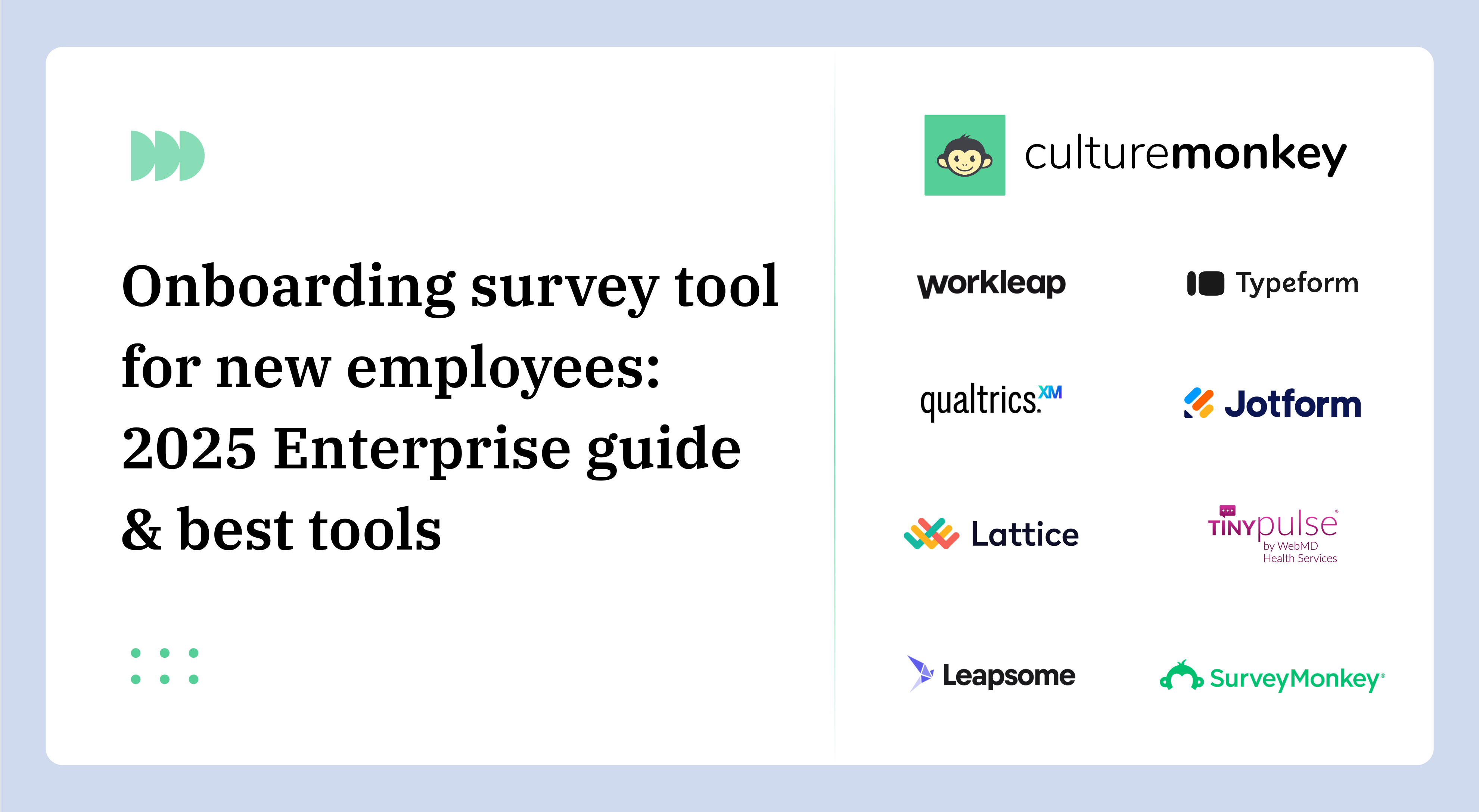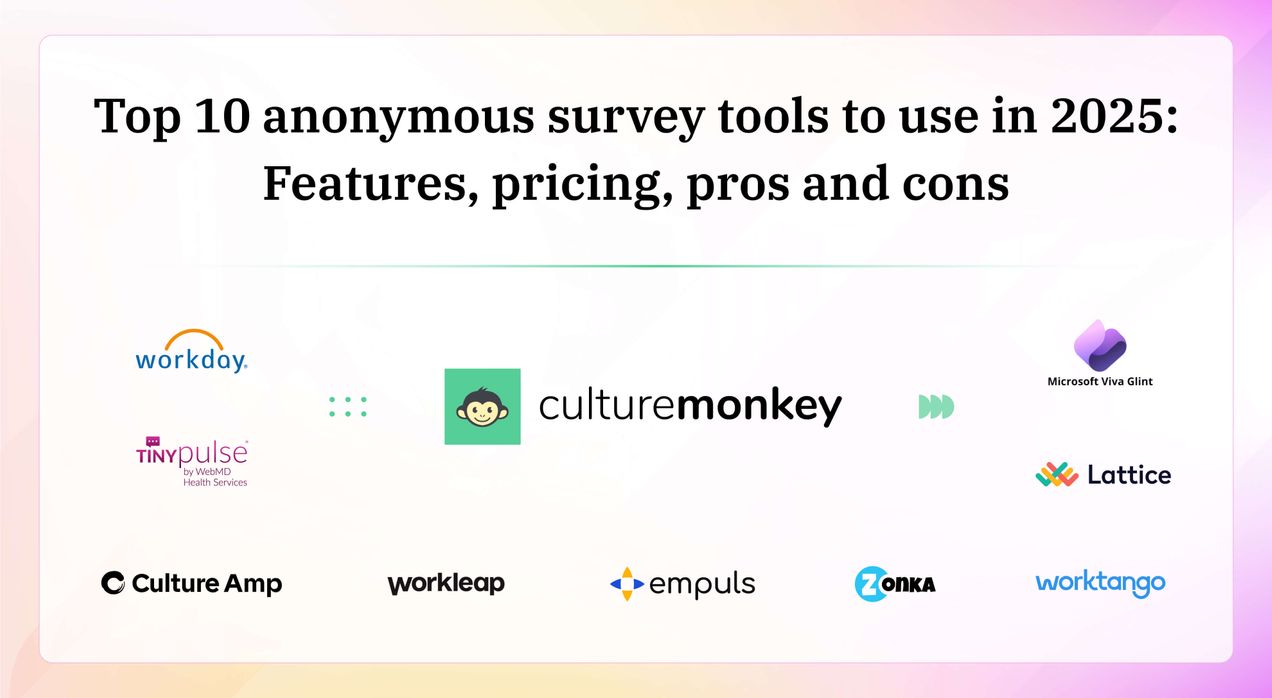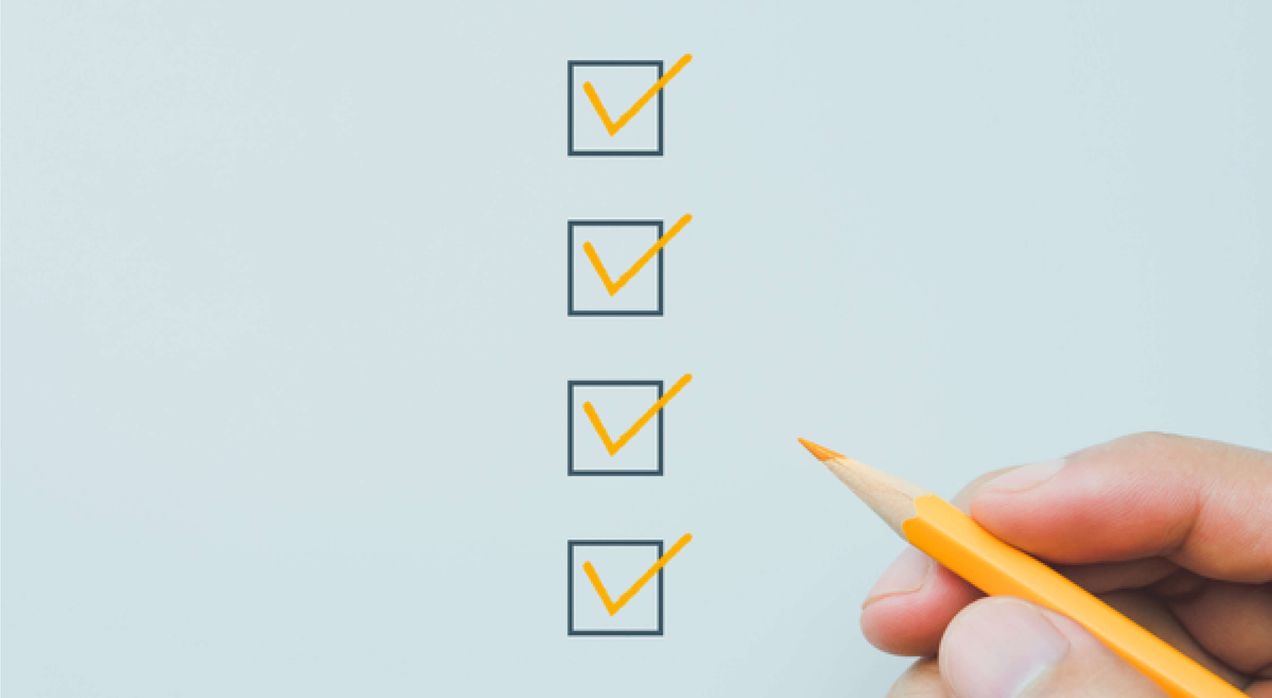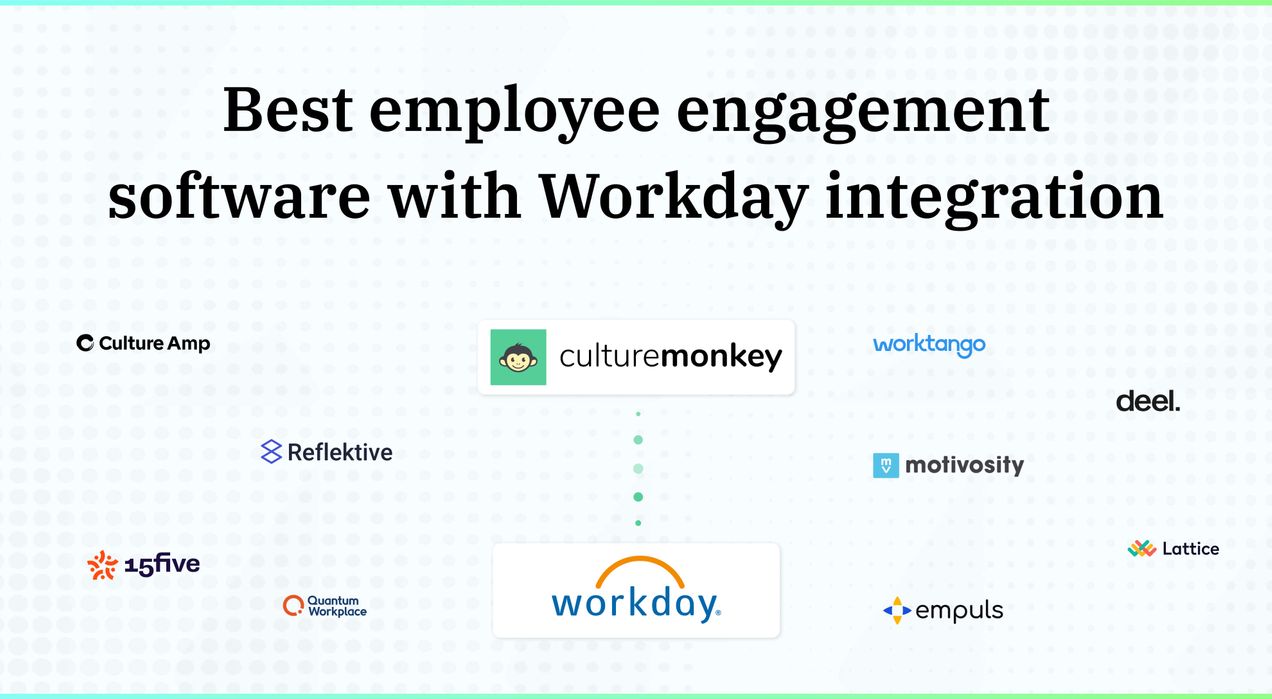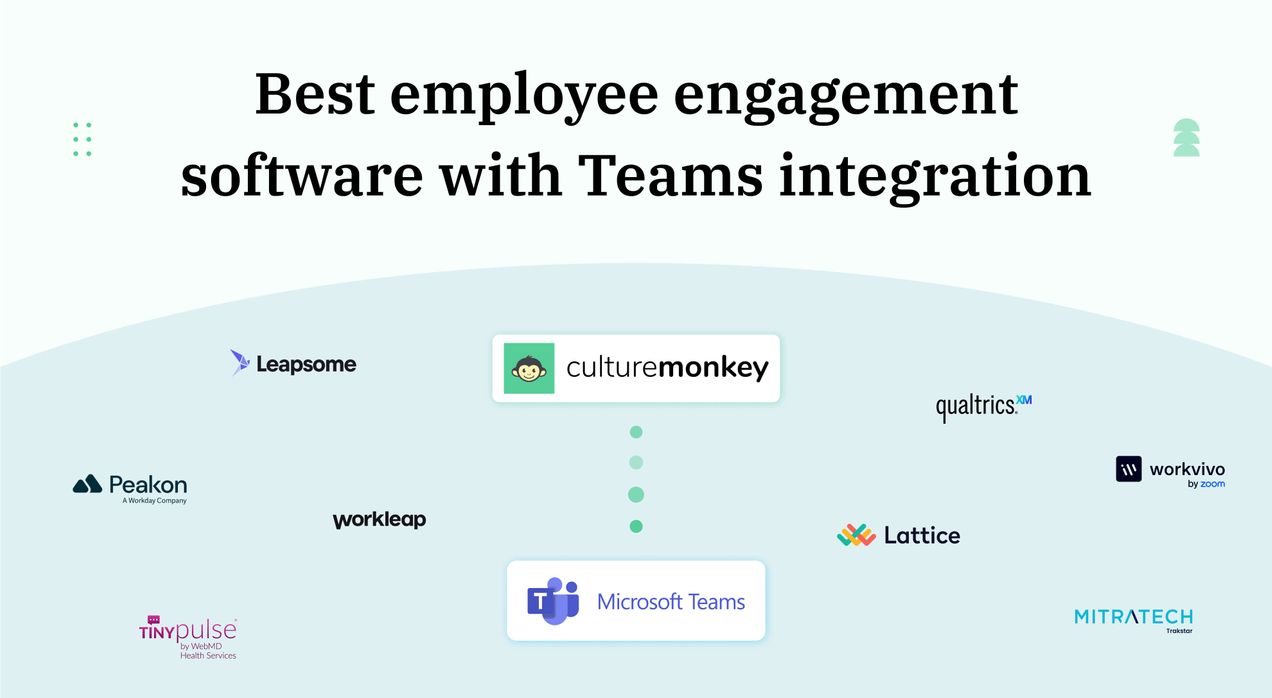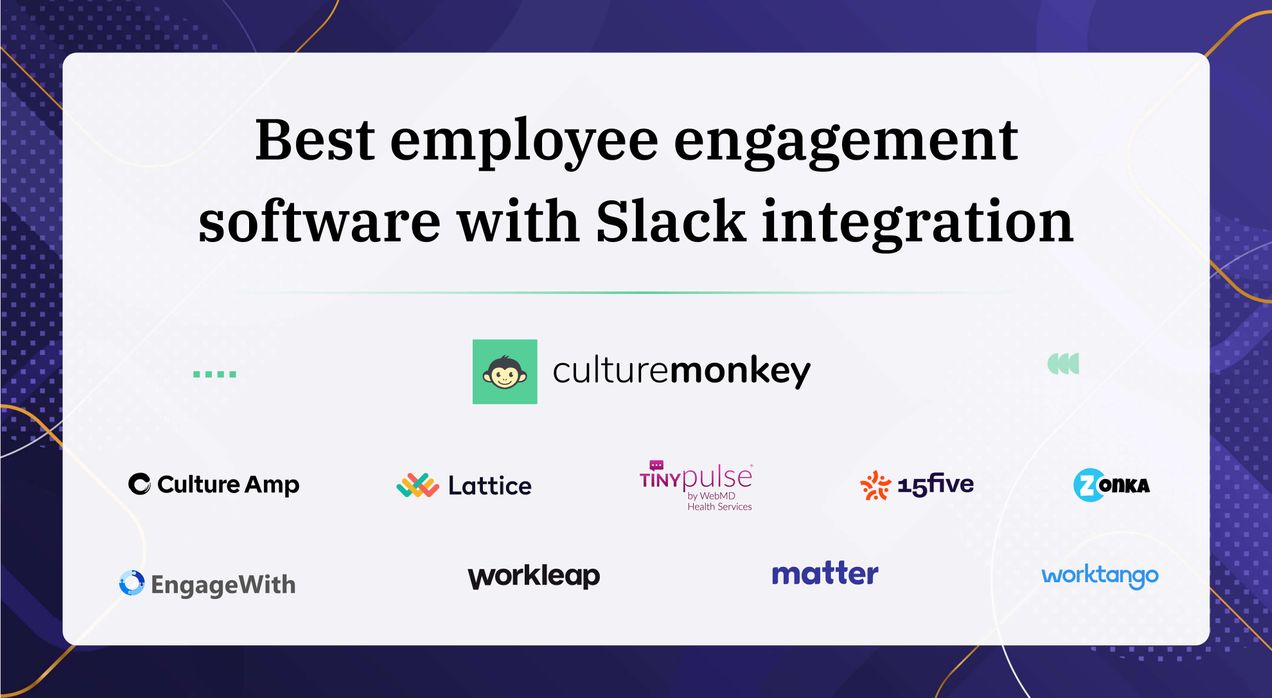CultureMonkey Blog
Employee Engagement Articles

Human resources survey: Template, questions & best practices
A human resources survey is a structured way to capture employee feedback on HR services, policies, and overall effectiveness. It gives HR teams visibility into how their efforts shape employee experience and provides data-driven insights to improve everything from onboarding to conflict resolution.
13 Steps to improving employee engagement and building a team that stays
Improving employee engagement in 2025 isn’t a buzzword—it’s a shift in how companies think about people. Employees are no longer satisfied with paychecks and perks alone; they want purpose, flexibility, and professional development opportunities for their careers.
Onboarding survey tool for new employees: 2025 Enterprise guide & best tools
Discover the best onboarding survey tools for new employees in 2025. Learn how HR leaders can capture early feedback, build trust, and improve retention. The right platform ensures anonymity, streamlines check-ins, and turns onboarding data into actionable insights for long-term employee success.
Transactional leadership: Examples leaders should know to maintain a positive culture
Transactional leadership is a leadership style focused on the exchange between leaders and followers. It is characterized by a system of rewards and punishments to motivate employees and achieve desired outcomes. This approach is often seen in structured environments.
Enterprise survey rollout change-management plan: A step-by-step guide for 2025
Launching an enterprise-wide survey without a plan is like hiring a band with no conductor, chaotic and off-key. A structured change management strategy attuned to an employee survey rollout ensures clarity, consistency, and engagement from the start, and makes surveys more effective.
Top 10 anonymous survey tools to use in 2025: Features, pricing, pros and cons
Explore the best anonymous survey tools in 2025 and learn how they enable leaders to capture candid feedback, measure engagement, & strengthen workplace trust. Discover how the right platform encourages honesty & transforms survey data into actionable insights that drive real organizational change.
Why building team synergy is important: Examples & questions
Team synergy isn't just a buzzword; it's the cornerstone of success. Explore its profound importance through concrete examples and engaging questions that encourage collaboration, innovation, and the attainment of ambitious goals. Learn how to harness the collective strengths of your team.
Employee experience vs employee engagement: How HR leaders can drive growth and trust in 2025
Imagine employee engagement as the pulse of your organisation. It's the excitement, motivation, and dedication your employees bring to the table. Alternatively, employee experience is all about the journey—the daily grind, the work culture, the tools and tech that make your employees' lives easier.
25 Red flags of an unhealthy work environment and steps to address them
A toxic workplace drains energy, kills morale, and damages productivity. This guide reveals 25 red flags of an unhealthy work environment and practical steps employers can take to rebuild trust, support employees, and create a healthy culture.
75+ Best employee communication survey questions to improve collaboration in 2025
Employee communication refers to the exchange of information, ideas, and feedback between employees and management. It ensures everyone is aligned with organizational goals, fosters collaboration, and trust. Effective communication is vital as it shapes workplace culture, and drives engagement.
Career satisfaction survey: How to measure fulfillment and growth at work
A career satisfaction survey is a structured way to understand how employees feel about their growth, learning opportunities, and long-term career trajectory within the company. Unlike general engagement or job surveys, it dives deeper into future-oriented aspects, helping employers spot gaps.
7 Employee life cycle stages and how they align people with business goals in 2025
Uncover the key stages of the employee life cycle and their impact on company culture. From recruitment to offboarding, learn how each stage presents opportunities to shape a positive and inclusive work environment. Maximize employee experience, boost engagement, and foster a thriving culture.
Starbucks company culture: Key values that made it stand out in the global market
Starbucks’ company culture is rooted in fostering a sense of community and belonging, both for its employees and customers. The company emphasizes inclusivity, respect, and support, creating an environment where diversity is celebrated.
75+ Employee climate survey questions to help HR leaders build a stronger culture in 2025
Dive into the world of employee climate surveys in 2025! Uncover the pulse of your workplace, and explore a curated questionnaire designed to decode the nuanced currents of employee satisfaction. It's more than a survey; it's a journey into the beating heart of organizational success.
50+ Employee happiness survey questions to ask your team in 2025
Creating a positive work environment begins with understanding your team's well-being. In 2024, it’s more important to ask the right questions in your employee happiness surveys. This curated list of 30+ questions is crafted to uncover key insights into what makes your employees happy and motivated.
What is a safe working environment: Benefits, best practices, and examples
Explore the advantages of a safe working environment. Learn the best practices that safeguard employees and find inspiration in real-world examples. Prioritize safety and well-being in your workplace journey. Achieve a thriving, secure, and productive work environment.
Employee engagement survey vendor evaluation checklist for 2025
Choosing a survey vendor isn't just about checking off a few tech specs—it's about ensuring the platform can actually support your people strategy. This checklist covers everything HR teams should evaluate before signing on the dotted line, including aspects critical for professional growth.
Best employee engagement software with Workday integration
Seamlessly run surveys, automate feedback, and gain real-time insights with Workday-connected tools. This guide features the best employee engagement software with Workday integration, including CultureMonkey, to help HR teams deliver timely, data-driven engagement at scale.
Best employee engagement software with Teams integration
Seamlessly run surveys, gather feedback, and drive higher participation without leaving Microsoft Teams. This guide highlights the best employee engagement software with native Teams integration, featuring CultureMonkey alongside other leading tools, to simplify survey delivery for HR and managers.
75+ Negative feedback examples: Learning and growing from constructive criticism
Transform negative feedback into growth opportunities with our collection of 75+ constructive examples. Learn how to embrace criticism, refine your skills, and enhance your professional journey. Constructive feedback is the catalyst for progress and success.
False accusations at work: How HR can protect both people and policy
Navigating false accusations at work requires HR leaders to balance empathy, clear communication, and thorough investigation. This guide explores the impact of false claims, reasons behind them, and effective strategies to manage such situations while maintaining trust and morale within the team.
100+ DEI tips to strengthen culture and improve retention in 2025
Foster belongingness at work with 100+ DEI tips. Embrace diversity, equity, and inclusion to create a workplace where everyone feels valued and respected. Elevate your organization's culture and empower your team to thrive in a diverse environment.
Best employee engagement software with Slack integration
Seamlessly run surveys, collect feedback, and boost engagement without leaving Slack. This guide explores the best employee engagement software with native Slack integration—featuring CultureMonkey and other top tools—to streamline participation, ensure anonymity, and drive real-time insights.
Employee engagement survey communication sample: How to effectively engage your workforce in 2025
An employee engagement survey communication is the process of informing and engaging employees about an upcoming survey designed to assess their workplace experiences, satisfaction, and overall engagement. It involves sharing clear, concise, and motivating messages that explain the survey's purpose.



